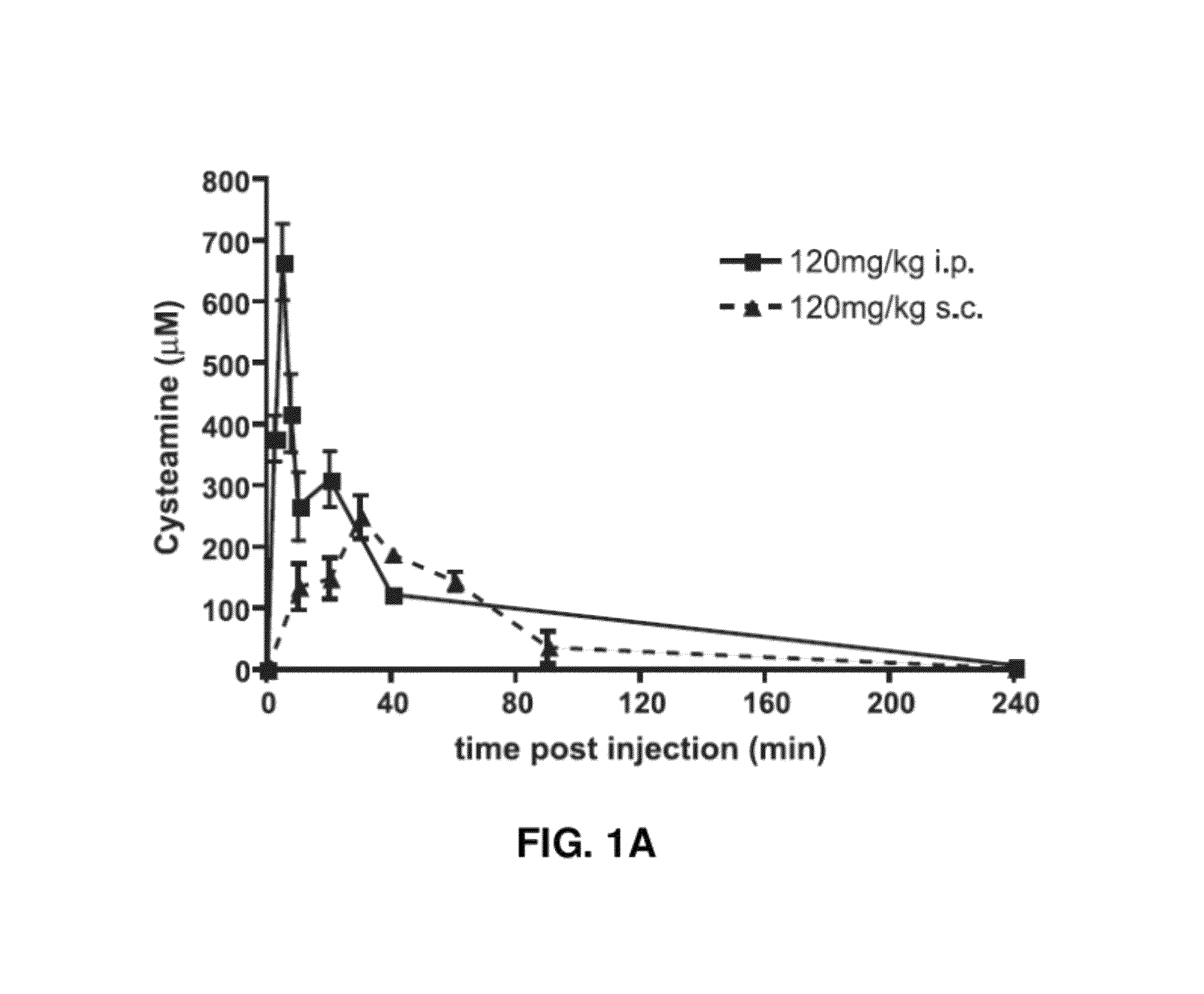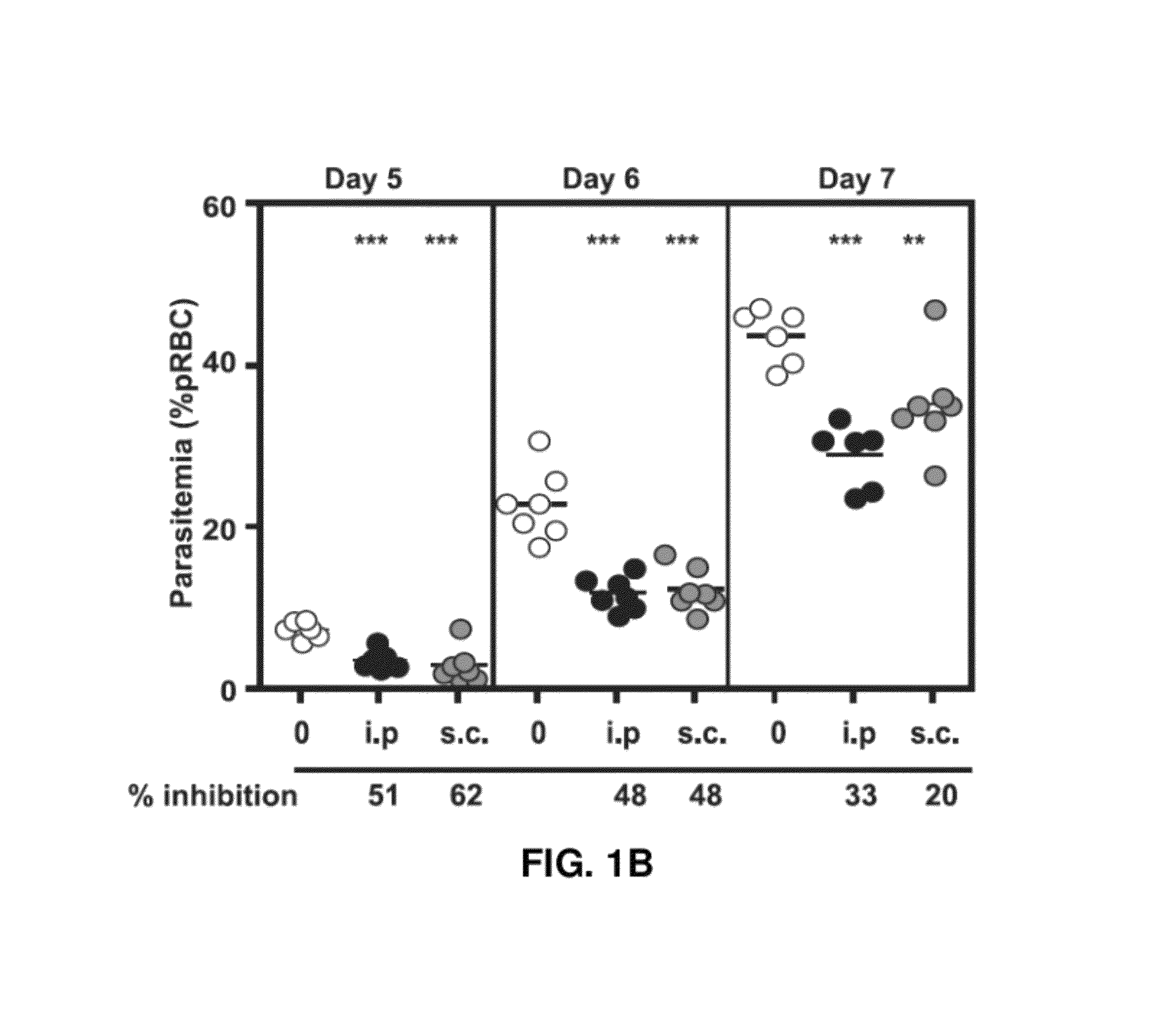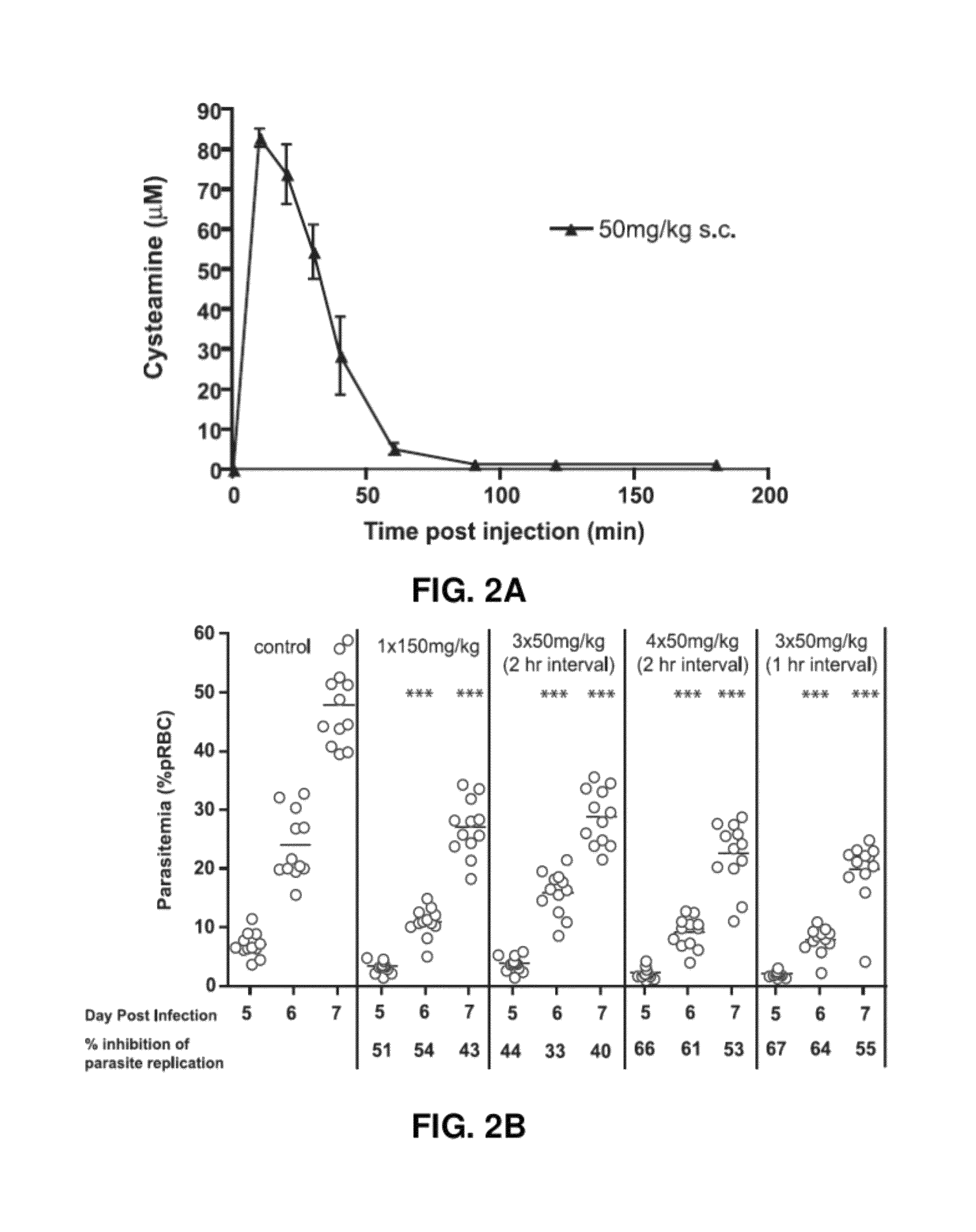Combination therapy and uses thereof for treatment and prevention of parasitic infection and disease
a technology of conjugation therapy and parasitic infection, applied in the field of parasitic infection and disease, can solve the problems of ineffective or toxic to the human host, insufficient effectiveness of most existing therapeutics, and often failure of drugs, and achieve the effect of reducing the peak level of parisitemia
- Summary
- Abstract
- Description
- Claims
- Application Information
AI Technical Summary
Benefits of technology
Problems solved by technology
Method used
Image
Examples
example 1
Materials and Methods
[0160]Mice. A / J and C57BL / 6 (B6) mice were purchased from the Jackson Laboratories (Bar Harbor, Me.) and were housed at McGill University according to the guidelines of the Canadian Council on Animal Care. An LDH virus-free isolate of P. chabaudi AS was maintained by weekly passage in NJ mice. Mice were infected intravenously into the tail vein (i.v.) with 106 or 107 pRBC suspended in pyrogen-free saline. Following infection, the percentage of pRBC was determined daily on thin blood smears stained with Dif-Quik™ (Dade Behring, Newark, Del.), as described (Fortin A, et al. (2001) Proc Natl Acad Sci USA 98: 10793-10798).
[0161]Pharmacokinetic studies of cysteamine hydrochloride in vivo. Cysteamine was detected in plasma by high performance liquid chromatography analysis with ultraviolet detection (Dias V C, et al. (1998) Clin Chem 44: 2199-2201). Briefly, blood was collected in EDTA / heparin-containing tubes, and plasma was obtained by centrifugation. Plasma thiols ...
example 2
Characteristics of Cysteamine Activity Against Plasmodium chabaudi Infection In Vivo
[0164]To gain more insight into the anti-malarial effect of cysteamine (Cys) in vivo, the pharmacokinetic characteristics (plasma level) of Cys administered through the sub-cutaneous (s.c.) and intra-peritoneal (i.p) routes was compared. Peak plasma concentration (Cmax) and total bioavailability (area under the curve, AUC) after administration of a single dose of 120 mg / kg of Cys hydrochloride (FIG. 1A) was measured. The Cmax was higher (665 μM) and reached more rapidly (Tmaxmax of 250 μM was attained with a Tmax of 30 min. On the other hand, total Cys bioavailability (AUCT0-Tlast) was comparable for both routes (24282 vs 15277 min×μM for i.p. and s.c., respectively). To determine which pharmacokinetic parameter (AUC vs. Cmax) is important for efficacy against Plasmodium, the i.p. and s.c. routes of injection were compared in a continuous treatment regimen, starting one day prior to infection (105 pR...
example 3
Cysteamine Dosing Used in the Treatment of Cystinosis Reduces Parasitemia During P. chabaudi Infection In Vivo
[0165]It was next determined whether Cys at equivalent dosing to that used in the clinical treatment of nephropathic cystinosis in humans has an effect on the course and severity of P. chabaudi infection in mice. In cystinosis patients, Cys is given orally as Cys bitartrate (Cystagon®). The PK profile of an oral dose of 1475 mg of Cys bitartrate (500 mg cysteamine base), includes a peak plasma concentration of 39 μM (Cmax) with a concomitant AUCT0-Tlast of 3613 min×μM (Fidler M C, et al. (2007) Br J Clin Pharmacol 63: 36-40). Results depicted in FIG. 2A show that a single s.c. injection of 50 mg / kg Cys hydrochloride in mice has a PK profile comparable to that of one oral dose of Cystagon® in humans, including a Cmax of ˜80 μM and an AUC of 2845 min×μM. The efficacy of different regimens of 50 mg / kg Cys s.c (number of injections, interval between injections) on replication of...
PUM
| Property | Measurement | Unit |
|---|---|---|
| thermal melting point | aaaaa | aaaaa |
| concentration | aaaaa | aaaaa |
| pH | aaaaa | aaaaa |
Abstract
Description
Claims
Application Information
 Login to View More
Login to View More - R&D
- Intellectual Property
- Life Sciences
- Materials
- Tech Scout
- Unparalleled Data Quality
- Higher Quality Content
- 60% Fewer Hallucinations
Browse by: Latest US Patents, China's latest patents, Technical Efficacy Thesaurus, Application Domain, Technology Topic, Popular Technical Reports.
© 2025 PatSnap. All rights reserved.Legal|Privacy policy|Modern Slavery Act Transparency Statement|Sitemap|About US| Contact US: help@patsnap.com



